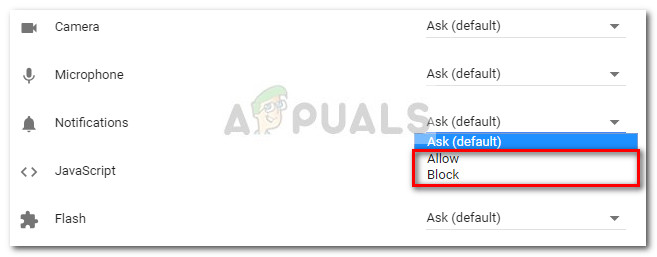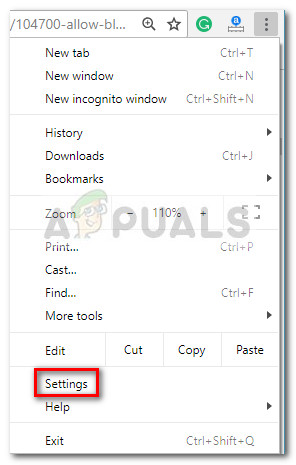How to Turn Off Chrome Notifications
A lot of major websites use browser notifications to announce important updates. Most major publications use browser notifications to break the news on important blog posts, special offers or new services.
Chrome notifications can be genuinely useful in a lot of cases – for example when Gmail notifies you that you received an important email or when a social media site announces that you have a new PM pending in your inbox. However, a whole lot of websites got into the practice of abusing browser notifications. Because a lot of websites send dozens of spammy browser notifications on a daily basis, users are looking for ways to prevent frequent notifications from interrupting their browsing experience.
The good news is, you can easily deny a website’s request to send notifications. However, going his route means that you have to repeat the same procedure for basically every website that you end up visiting. Luckily, there are other ways that you can use to stop all websites from sending you notifications.
How to Allow or Block Website Notifications on Google Chrome
Google Chrome is kind enough to ask you whether a site can send you browser notifications or not. You have the option to either Allow or Block notifications from a particular website.

However, you might end up discovering that a website that you previously thought will only send you important notifications is now abusing them. Since the choice is not final, you can manage Chrome’s settings to either allow or block notifications permissions for all sites at once or for a specific site.
Below you have a collection of methods that you can use to change browser notifications permissions to either allow or block website notifications in Google Chrome in Windows 7, Windows 8 and Windows 10. Feel free to use whichever method seems more applicable to your particular scenario. Let’s begin!
Method 1: Enable or Disable Block Notifications from a specific website
If you’re looking for a way to change the notification settings for a specific site in Chrome, there’s one method that will allow you to do this in a few simple steps. Google Chrome allows it’s users to modify specific notification settings straight from the omnibar.
Here’s a quick guide on how to change the website notification settings for a specific website in Chrome:
- Open Google Chrome and acess the website that you want to change the notification settings for.
- Click on the lock icon near the address in the omnibar. Depending on the website, you might also see an Info icon or a Dangerous icon.

- In this menu, click on Site settings or Notifications (if available directly).

- In the Site Settings menu, use the drop-down menu associated with Notifications to modify it to your preferences. You can set it to Allow to continue receiving notifications or to Block to stop receiving website notifications.

- To save the changes, simply reload the page.
If you’re looking for a different method of enabling or disabling notifications, continue to Method 2.
Method 2: Change Notification Settings for multiple sites in Chrome
If you’re looking for a way to disable a browser notification with a few clicks, you can also use the same Content Menu to either block or allow all notifications from bothering your surfing sessions.
This is a great method if you’re looking for a quick fix that will disable or re-enable website notifications. Follow the guide below to change the notification settings and disable or re-enable website notifications in Chrome:
- Open Google Chrome and click/tap the action icon (three-dot icon) and click on Settings.

- Then, scroll all the way down in the Settings list and click on Advanced to expand the drop-down menu.
- In the Advanced menu, scroll down to Privacy and security, then click on Content settings.

- In the Content settings menu, click on Notifications menu.
Note: You can also reach this location by typing or pasting “chrome://settings/content/notifications” in Chrome’s omnibar. - In the next menu, you should see two different lists of notifications – Block and Allow. To remove or block a website notification, go to the Allow list click on the action icon associated with it. Then, either click on Block or Remove to block any notifications.

- If you wish to unblock a notification, go to the Block list and access the action menu associated with the website that you want to receive notification from. Then, click on Allow to start receiving notifications again from this website.
 Note: You can also add new entries to the Block and Allow lists manually by clicking the Add button and pasting the website URL.
Note: You can also add new entries to the Block and Allow lists manually by clicking the Add button and pasting the website URL.
Method 3: Enable or Disable Block Notifications from all sites in Chrome
If you have a lot of websites sending you spammy notifications, you can make them stop all at once by disabling the notifications from Content Settings. You will no longer see the annoying dialog box but you will continue to receive notifications from websites that you previously accepted.
This is an ideal approach if you’re looking for a quick way to stop constant interruptions caused by notifications and notification prompts. However, this method is not recommended if you wish to disable all notifications at once.
Note: If you’re looking for a way to disable specific notifications from a certain website, jump straight to Method 3.
Follow the guide below to either enable or disable website notifications from all sites in Chrome via the Content Settings menu:
- Open Google Chrome and click on the More action menu (three dot icon), then click on Settings.

- In the Settings menu, scroll all the way down and click on Advanced to expand the drop-down menu.
- In the Advanced drop-down menu, scroll down to Privacy and security, then click on Content Settings.

- In the Content settings window, scroll down and click on Notifications.
Note: You can also reach this location by typing or pasting “chrome://settings/content/notifications” in Chrome’s omnibar. - Finally, disable the toggle associated with Ask before sending (recommended) to block all incoming website notifications. Once the Notifications menu shows as Blocked, all website notifications are disabled.
 Note: Keep in mind that this method will only prevent notifications from new websites from showing up in Chrome. You will still receive website notifications from websites that you previously allowed, but you will no longer see the dialog asking you whether you want to receive notifications or not.
Note: Keep in mind that this method will only prevent notifications from new websites from showing up in Chrome. You will still receive website notifications from websites that you previously allowed, but you will no longer see the dialog asking you whether you want to receive notifications or not.
If you’re looking for a different way of disabling website notifications on Google Chrome, continue down with Method 2.





